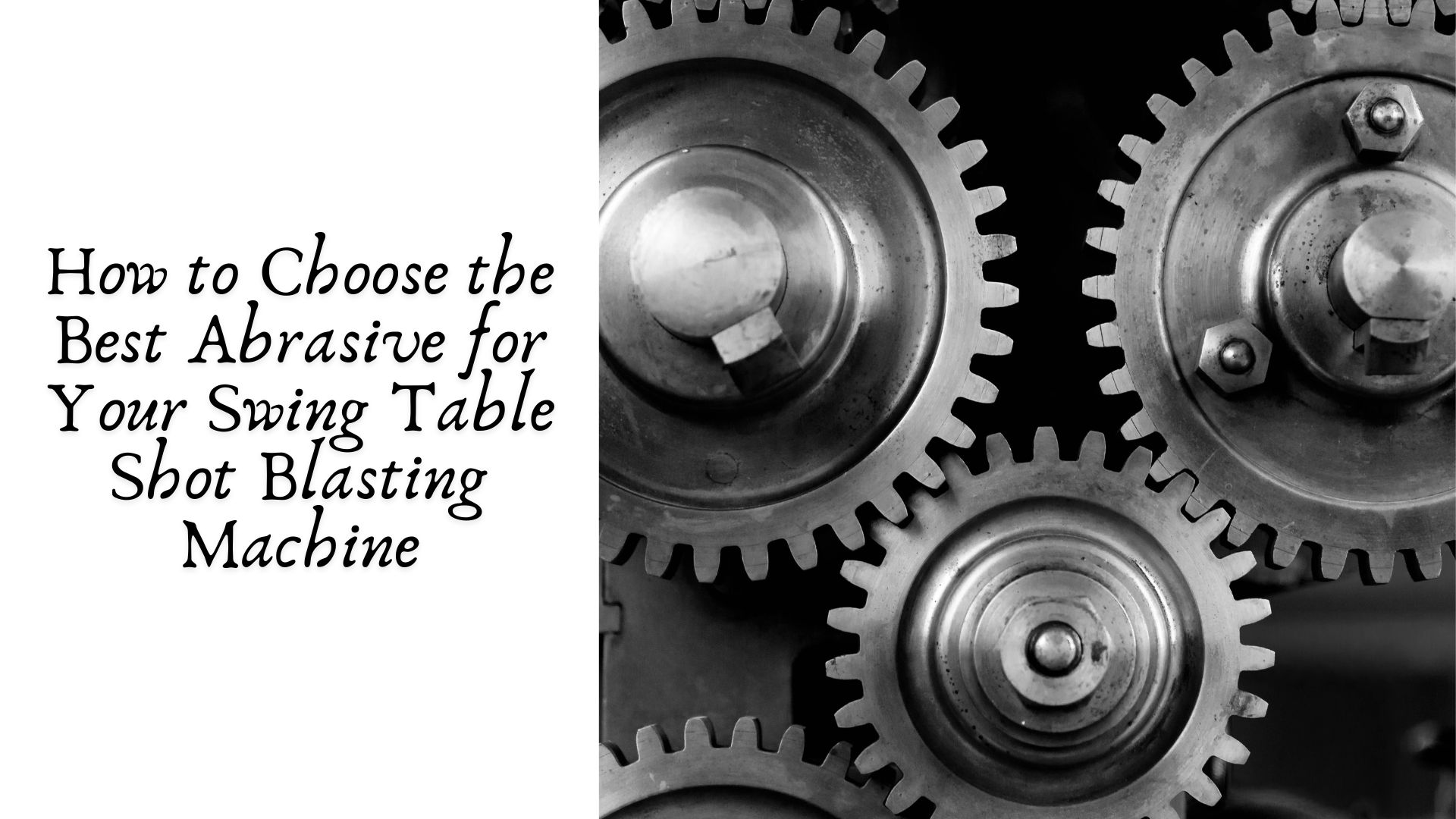Selecting the right abrasive for your swing table shot blasting machine is crucial for achieving optimal results in surface preparation and finishing. With a myriad of abrasive materials available, making an informed choice can enhance the efficiency, cost-effectiveness, and quality of your blasting process. This guide will help you navigate through the key factors to consider when choosing the best abrasive for your swing table shot blasting machine.
Understanding the Basics of Shot Blasting Abrasives
Shot blasting abrasives are materials used to clean, smooth, or roughen surfaces by propelling them at high velocities. These abrasives come in various shapes, sizes, and compositions, each suitable for specific applications. The primary categories of abrasives include metallic abrasives, such as steel shot and steel grit, and non-metallic abrasives, like glass beads, aluminum oxide, and plastic media.
Factors to Consider When Choosing an Abrasive
Material Type and Composition
The type of material being blasted plays a significant role in determining the appropriate abrasive. For example:
-
Steel Shot and Steel Grit: Ideal for heavy-duty cleaning and surface preparation of metal surfaces. Steel shot provides a smoother finish, while steel grit is more angular and aggressive, suitable for removing tough coatings and rust.
-
Glass Beads: Best for delicate surfaces and achieving a smooth, matte finish. They are commonly used for peening and finishing applications where maintaining the integrity of the surface is crucial.
-
Aluminum Oxide: A versatile abrasive that can be used on various materials, including metals, plastics, and wood. It is durable and efficient for both surface preparation and finishing tasks.
-
Plastic Media: Suitable for applications requiring minimal damage to the substrate, such as cleaning and deburring softer materials like aluminum and plastic.
Hardness and Durability
The hardness of the abrasive affects its performance and lifespan. Abrasives are rated on the Mohs scale of hardness, with harder materials generally lasting longer and providing more aggressive blasting action. However, harder abrasives can also cause more wear and tear on the blasting equipment. Balancing hardness and durability with the desired finish and equipment maintenance is essential.
Particle Size and Shape
The size and shape of the abrasive particles influence the blasting process’s efficiency and the finish quality. Finer particles produce smoother finishes, while coarser particles are more effective for removing heavy coatings and contaminants. Angular particles, like steel grit and crushed glass, are more aggressive and suitable for heavy-duty cleaning, while spherical particles, like steel shot and glass beads, provide a more uniform finish.
Abrasive Density
Density affects the impact energy of the abrasive particles. Denser abrasives deliver higher energy impacts, making them suitable for tougher cleaning tasks. For example, steel shot has a higher density than glass beads, making it more effective for removing heavy rust and scale. Consider the density of the abrasive in relation to the material being blasted and the desired surface profile.
Recycling and Cost Efficiency
Some abrasives can be recycled multiple times before they break down, while others are single-use. Metallic abrasives, such as steel shot and grit, are highly recyclable and offer cost savings over time. Non-metallic abrasives, like glass beads and plastic media, are generally less recyclable but may be preferable for specific applications where contamination needs to be minimized.
Matching Abrasives to Specific Applications
Surface Preparation
For preparing surfaces before painting or coating, steel grit is often the preferred choice due to its aggressive nature and ability to create a rough surface profile, enhancing coating adhesion. Aluminum oxide is also effective for surface preparation, offering a balance between aggression and finish quality.
Cleaning and Maintenance
Steel shot is ideal for routine cleaning and maintenance tasks, providing a smooth, uniform finish on metal surfaces. For delicate cleaning tasks, such as removing surface deposits without damaging the substrate, glass beads are an excellent choice.
Peening and Finishing
Peening applications, which involve cold working the surface to improve its mechanical properties, typically use glass beads or steel shot. These abrasives create a compressive stress layer on the surface, enhancing fatigue resistance and durability. For finishing applications requiring a smooth, matte finish, glass beads and aluminum oxide are commonly used.
Specialty Applications
For specialized tasks like deburring plastic parts or cleaning aluminum components, plastic media is often the best choice. It provides effective cleaning without damaging the softer substrate materials. Walnut shells and corn cob are natural abrasives used for gentle cleaning and polishing tasks, especially in the automotive and aerospace industries.
Conclusion
Choosing the best abrasive for your swing table shot blasting machine requires a thorough understanding of the material properties, desired finish, and specific application requirements. By considering factors such as material type, hardness, particle size, density, and recyclability, you can select an abrasive that optimizes your blasting process’s efficiency, cost-effectiveness, and quality. Whether you are preparing surfaces for coating, performing routine cleaning, or undertaking specialized finishing tasks, the right abrasive will ensure your swing table shot blasting machine delivers exceptional results.
Name: Process & System
Address: Modi House, Ground Floor, 14, Raja Naba Krishna Street, Kolkata – 700 005, WB, India
P.No.: 9051202216

